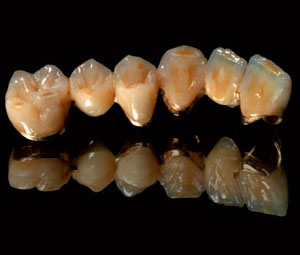


Usually, a dental bridge is anchored to your healthy teeth on either side of the gap in your mouth. And missing teeth can even lead to gum disease and temporomandibular joint (TMJ) disorders. A dental bridge is a fixed appliance that fills the space in your mouth where one or more teeth are missing. Gaps in areas of loss can cause your other teeth to begin rotating or shifting into the empty spaces, resulting in a bad bite. These are similar to traditional bridges, but the pontic is supported by an abutment on only one. Whichever of these replacement tooth options is best for you – they can be vital in maintaining your oral health. Other less common bridge options include cantilever bridges. Crowns are certainly less costly than a bridge, but these are typically used to treat different types of problems. This false tooth, or pontic, is held in its position on the gum by the anchoring crowns next to it. A traditional bridge is supported by natural teeth. A bridge is a false tooth that is fused to one or two crowns. The two anchoring teeth are called abutment teeth.
#The anchoring of a crown bridge or professional
The crowns at the ends of a bridge can fuse to existing teeth (that need to be filed down by a dental professional to fit correctly), or your dental professional can attach them to dental implants. A bridge versus a crown is a more specific situation. The anchor crowns (also known as retainer crowns) are two (or more) dental crowns that are cemented to the teeth adjacent to the toothless gap to support the bridgework restoration. They have two crowns – one on either end – and a bridge of replacement teeth that rest in the area of the gums where there is tooth loss. Your dental professional will then place a metal post (or abutment) into your implant, onto which they will mount your crown.īridges, on the other hand, are solely used to replace missing teeth. Types of dental bridges Traditional bridge It fills a gap in the mouth because of a lost tooth. If there are no abutment teeth or if they are too badly damaged, implants or removable dentures are used.

According to the Cleveland Clinic, the healing process after getting an implant can take 6-12 weeks. The crowns adjacent to the pontic serve as anchoring to the abutment teeth. This process provides stable support you can rely on while eating and speaking. These metal implants become anchored to your bone through osseointegration (the bone fuses to the metal). Dental implants are metal fixtures, surgically fastened to your jawbone below the gums. This type of bridge is composed of one dental crown adhered to both the surrounding teeth with a fake tooth or teeth in the between. What's the Difference Between Dental Crowns and Dental Bridges?Ī dental crown can cap an individual's damaged or decaying tooth or be placed on top of a dental implant to replace a missing tooth.


 0 kommentar(er)
0 kommentar(er)
